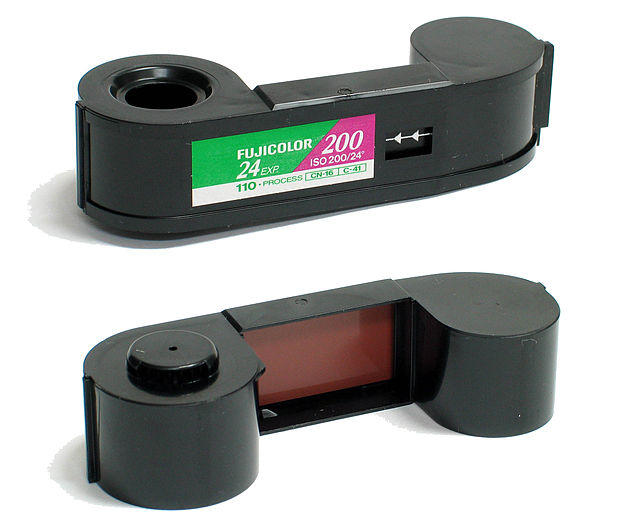110 is a cartridge-based film format used in still photography. It was introduced by Kodak in 1972. 110 is essentially a miniaturized version of Kodak's earlier 126 film format. Each frame is 13 mm × 17 mm, with one registration hole. Cartridges with 12, 20, or 24 frames are available on-line. Production variations sometimes have allowed for an additional image.
110 film cartridge (shown from front and from rear.)
Comparison of Disc, 110, and 135 image size.
Kodak Instamatic 192, a typical 110-format pocket camera, with 110 film and "Magicube" flash cartridge (with extender).
Negative strip of 110 film (with pencil for scale). The strip shown measures 111 mm × 16 mm (4.37 in × 0.63 in)
126 film is a cartridge-based film format used in still photography. It was introduced by Kodak in 1963, and is associated mainly with low-end point-and-shoot cameras, particularly Kodak's own Instamatic series of cameras.
The 126 film cartridge.
A photo of the Holburne Museum of Art, Bath, taken with 126 film and illustrating the square format.
126 negative strip (converted to positive) with numbered leaders on a roll of 20 exposures from the 1970s showing the manufacturer text "Kodak Safety Film" indicating acetate base (non-nitrate).
Kodak Instamatic X-15 with open door and loaded 126 film cartridge








